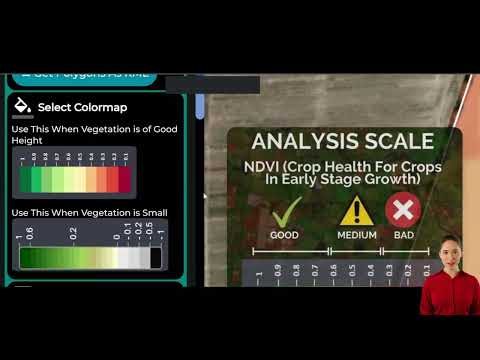Sustainable Agriculture and Climate Resilience: Kenya and Serbia’s $130M Green Investment for Food Security

“Green Climate Fund approves $130M+ for climate resilience projects in Kenya and Serbia, benefiting over 6.3 million people.”
In a landmark move towards sustainable agriculture and climate resilience, the Green Climate Fund (GCF) has approved funding for two groundbreaking projects valued at over $130 million. These initiatives, spearheaded by the Food and Agriculture Organization of the United Nations (FAO), are set to bolster climate resilience and promote sustainable development in Kenya and Serbia. As we delve into the details of these transformative projects, we’ll explore how they aim to enhance food security, improve livelihoods, and reduce greenhouse gas emissions in vulnerable communities.
The Global Context: Climate Change and Food Security
Before we examine the specifics of the Kenya and Serbia projects, it’s crucial to understand the global context in which these initiatives are taking place. Climate change poses an unprecedented threat to agriculture and food security worldwide. Rising temperatures, unpredictable rainfall patterns, and extreme weather events are challenging traditional farming practices and threatening the livelihoods of millions of people, particularly in developing countries.
In this challenging landscape, sustainable agriculture practices and climate change adaptation strategies have become essential for ensuring food security and building resilient communities. The Green Climate Fund, a critical element of the Paris Agreement, plays a pivotal role in supporting developing countries to raise and achieve their climate ambitions.
FAO and GCF: A Powerful Partnership for Climate Action
The collaboration between FAO and GCF since 2016 has been instrumental in scaling up climate investments in high-impact projects. These initiatives make the agriculture, forestry, and fisheries sectors more efficient, inclusive, sustainable, and resilient to climate change. By leveraging global partnerships, FAO catalyzes public and private investments in climate change adaptation and mitigation actions through agriculture and food systems.
This approach aligns with the FAO Strategy on Climate Change 2022-2031, which aims to achieve better production, better nutrition, better environment, and better lives. The partnership between FAO and GCF supports over 50 million family farmers in 91 countries, with a portfolio now exceeding $1.5 billion with the newly approved grants.
Kenya: Transforming Livelihoods through Climate-Resilient Agriculture

“Kenya’s climate-smart agriculture project aims to transform value chains in Lake Region Economic Bloc, impacting 2.7 million people.”
The $50 million project in Kenya ($29.2 million GCF grant and $20.8 million in co-financing) is set to transform agricultural value chains in the Lake Region Economic Bloc. This initiative will benefit 2.7 million people, with half of the beneficiaries being women. The region, known for its dense population and high dependence on agriculture, faces significant challenges due to climate change impacts such as increasing temperatures, unpredictable rainfall, and floods that threaten food security and livelihoods.
Key Features of the Kenya Project:
- Focus on six value chains: dairy, poultry, coffee, tea, fruit trees, and African leafy vegetables
- Training and support for over 143,000 farmers in climate-smart technologies and practices
- Improved access to markets and finance
- Promotion of sustainable land management practices across 30,000 hectares
- Creation of up to 3,000 jobs
The project’s holistic approach aims to trigger a paradigm shift towards climate-resilient, low-carbon, and sustainable agriculture in the region. By leveraging Agriterra’s extensive experience with cooperatives and working with the private sector, including banks, the initiative will strengthen farmers’ resilience to climate change while increasing their household incomes.
As we consider the transformative potential of this project in Kenya, it’s worth noting how innovative technologies are revolutionizing land use in agriculture. Farmonaut’s satellite-based farm management solutions offer valuable tools for precision agriculture, which could complement the climate-smart practices being implemented in Kenya.
Serbia: Enhancing Forest Resilience for Energy Security
The $84 million project in Serbia ($25 million GCF grant and $59 million in co-financing) marks the country’s first single-country GCF investment. This initiative will enhance the resilience of forests, contributing to energy security and supporting the livelihoods of 3.6 million people, which represents over half of Serbia’s population.
Key Features of the Serbia Project:
- Promotion of sustainable and climate-resilient forest management
- Implementation of climate-adaptive silviculture
- Development of a carbon finance framework
- Afforestation of 7,000 hectares with climate-adaptive tree species
- Conversion of 51,000 hectares of degraded forests
- Training for over 2,500 forest managers in climate-adaptive practices
The project addresses the challenge of fuelwood dependence, which puts immense pressure on forests and hinders the country’s climate goals. By engaging the private sector in sustainable biomass value chains and aiming to mobilize $50 million in private finance, the initiative supports the decarbonization of agribusinesses.
The focus on soil organic carbon in sustainable farming practices, as highlighted in the video above, aligns well with the Serbian project’s goals of enhancing forest resilience and promoting sustainable land management.
Comparative Analysis: Kenya vs. Serbia Climate Resilience Initiatives
| Project Aspects | Kenya | Serbia |
|---|---|---|
| Project Focus | Climate-resilient agricultural value chains | Forest resilience and energy security |
| Investment Amount | $50 million | $84 million |
| Target Beneficiaries | 2.7 million people | 3.6 million people |
| Main Agricultural Sectors | Dairy, poultry, coffee, tea, fruit trees, African leafy vegetables | Forestry and biomass |
| Climate-Smart Technologies | Climate-resilient farming practices, sustainable land management | Climate-adaptive silviculture, sustainable forest management |
| Expected Environmental Impact | Reduced greenhouse gas emissions, improved soil health | Enhanced forest resilience, carbon sequestration |
| Economic Benefits | Increased farmer incomes, job creation, improved market access | Energy security, private sector engagement in sustainable biomass |
This comparative analysis highlights the unique approaches taken by Kenya and Serbia in addressing climate resilience and sustainable development. While Kenya focuses on transforming agricultural value chains, Serbia emphasizes forest management and energy security. Both projects, however, share common goals of enhancing climate resilience, improving livelihoods, and promoting sustainable practices.
The Role of Technology in Climate-Resilient Agriculture
As we explore these innovative projects in Kenya and Serbia, it’s important to recognize the crucial role that technology plays in advancing climate-resilient agriculture. Farmonaut’s advanced satellite-based farm management solutions offer valuable tools that could complement and enhance the climate-smart practices being implemented in these countries.
Farmonaut’s web app, as demonstrated in the tutorial above, provides comprehensive tools for interpreting satellite data. This technology could be invaluable for farmers and forest managers in Kenya and Serbia as they adapt to climate change and implement sustainable practices.
Key Technologies Supporting Climate-Resilient Agriculture:
- Satellite-based crop health monitoring
- AI-driven personalized farm advisory systems
- Blockchain-based product traceability
- Fleet and resource management tools
- Carbon footprint tracking
These technologies offer precise, real-time data on crop health, soil moisture, and weather patterns, enabling farmers to make informed decisions that optimize their resources. This leads to better crop yields, reduced input costs, and minimized crop losses – all crucial factors in building climate resilience.
Sustainable Agriculture Practices for Climate Resilience
Both the Kenya and Serbia projects emphasize the implementation of sustainable agriculture practices to enhance climate resilience. These practices not only help mitigate the impacts of climate change but also contribute to long-term food security and environmental conservation.
Key Sustainable Agriculture Practices:
- Conservation tillage
- Crop rotation and diversification
- Agroforestry
- Integrated pest management
- Efficient irrigation systems
- Use of climate-resistant crop varieties
By adopting these practices, farmers can improve soil health, conserve water, reduce greenhouse gas emissions, and increase their resilience to climate shocks. The projects in Kenya and Serbia aim to provide training and support to help farmers transition to these sustainable methods.
The visualization of farms using satellite data, as demonstrated in the video above, can be a powerful tool for implementing and monitoring sustainable agriculture practices. This technology allows for precise monitoring of crop health, soil conditions, and land use changes, enabling more effective implementation of climate-resilient farming techniques.
The Impact on Food Security and Livelihoods
The investments in Kenya and Serbia are expected to have significant positive impacts on food security and livelihoods in these regions. By enhancing climate resilience in agriculture and forestry, these projects aim to secure food production, improve income stability for farmers and forest-dependent communities, and contribute to overall economic development.
Expected Outcomes:
- Increased agricultural productivity and yields
- Enhanced food security for vulnerable populations
- Improved income stability for farmers and forest-dependent communities
- Creation of new job opportunities in sustainable agriculture and forestry
- Reduced vulnerability to climate shocks
These outcomes align with the broader goals of sustainable development and climate change adaptation, demonstrating how targeted investments in climate-resilient agriculture can have far-reaching benefits for communities and ecosystems.
The Global Significance of These Initiatives
The projects in Kenya and Serbia serve as important models for climate resilience and sustainable development initiatives worldwide. They demonstrate how global partnerships and green climate finance can be leveraged to address the complex challenges of climate change, food security, and sustainable resource management.
As countries around the world grapple with the impacts of climate change on their agriculture and forestry sectors, the lessons learned from these projects will be invaluable. They provide practical examples of how to implement climate-smart technologies, engage local communities, and create sustainable value chains that benefit both people and the environment.
The Role of Technology in Scaling Up Climate-Resilient Agriculture
As we look to the future of climate-resilient agriculture, the role of technology in scaling up sustainable practices cannot be overstated. Advanced tools like those offered by Farmonaut have the potential to accelerate the adoption of climate-smart farming techniques and improve their effectiveness.
Key Technologies for Scaling Climate-Resilient Agriculture:
- Satellite-based crop monitoring for precision agriculture
- AI-powered advisory systems for personalized farm management
- Blockchain technology for supply chain transparency
- IoT sensors for real-time data collection
- Big data analytics for improved decision-making
These technologies can help farmers and policymakers make data-driven decisions, optimize resource use, and respond quickly to changing environmental conditions. By integrating these tools into climate resilience projects, we can enhance their impact and reach.
Challenges and Opportunities
While the projects in Kenya and Serbia offer promising solutions for climate resilience and sustainable agriculture, they also face several challenges:
- Ensuring widespread adoption of new practices and technologies
- Addressing socio-economic barriers to implementation
- Maintaining long-term sustainability of the initiatives
- Scaling up successful approaches to reach more communities
- Integrating local knowledge with scientific approaches
However, these challenges also present opportunities for innovation, collaboration, and learning. By addressing these issues, we can develop more robust and effective approaches to climate-resilient agriculture that can be adapted and replicated in other regions.
Conclusion: A Path Forward for Sustainable Agriculture and Climate Resilience
The $130 million investment in climate resilience projects in Kenya and Serbia represents a significant step towards sustainable agriculture and food security in the face of climate change. These initiatives demonstrate the power of global partnerships, innovative technologies, and sustainable practices in building resilient communities and ecosystems.
As we move forward, it’s crucial to continue supporting and scaling up such projects, learning from their successes and challenges. By combining traditional knowledge with cutting-edge technologies like those offered by Farmonaut, we can create a more sustainable and resilient future for agriculture worldwide.
The path to climate resilience and sustainable agriculture is complex, but with continued investment, innovation, and collaboration, we can build a more secure and sustainable food system for generations to come.
FAQ Section
- Q: What is the Green Climate Fund (GCF)?
A: The GCF is a global fund created to support developing countries in reducing greenhouse gas emissions and adapting to climate change. It’s a critical element of the Paris Agreement on climate change. - Q: How do these projects contribute to climate change mitigation?
A: These projects promote sustainable agriculture and forestry practices that reduce greenhouse gas emissions, enhance carbon sequestration, and improve resource efficiency. - Q: What are some examples of climate-smart technologies used in these projects?
A: Climate-smart technologies include drought-resistant crop varieties, efficient irrigation systems, sustainable forest management techniques, and precision agriculture tools like satellite-based crop monitoring. - Q: How do these projects benefit local communities?
A: The projects aim to improve food security, increase farmer incomes, create jobs, and enhance community resilience to climate change impacts. - Q: Can the approaches used in Kenya and Serbia be applied to other countries?
A: Yes, while the specific interventions are tailored to local contexts, the overall approaches of promoting climate-resilient agriculture and sustainable resource management can be adapted for use in other countries facing similar challenges.
Earn With Farmonaut: Affiliate Program
Earn 20% recurring commission with Farmonaut’s affiliate program by sharing your promo code and helping farmers save 10%. Onboard 10 Elite farmers monthly to earn a minimum of $148,000 annually—start now and grow your income!
For developers interested in integrating Farmonaut’s satellite and weather data into their own systems, check out our API and API Developer Docs.







